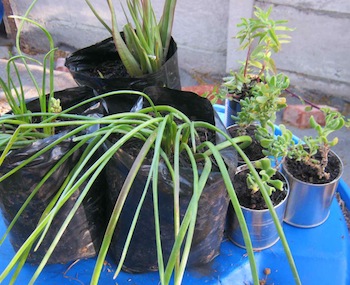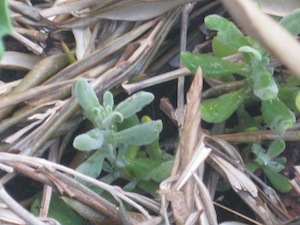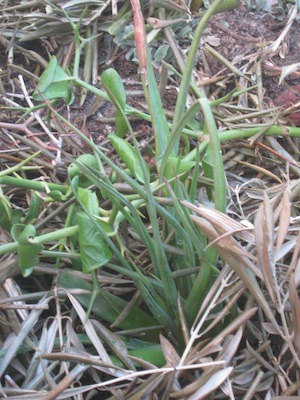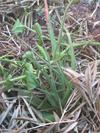Dear Reader, in this age of AI created content, please support with your goodwill someone who works harder to provide the human-made. Sign up in the righthand column or bottom of this page. You will receive my hand illustrated monthly newsletter RESTORE NATURE and access to the biodiversity garden design course as I write...and nothing else, I respect your time.
forage in your own garden for wild plant foods

the newly purchased native vegetables
I recently found a selection of indigenous wild vegetables at a community fair in Muizenberg (I say wild because in South Africa the culture of native vegetables is only in its infancy).
I bought what I was told were indigenous mint and Sandkool, Veldkool and Soutslaai. I planted them out along an su drenched plastered and unpainted wall on a raised bed, as they love good drainage, lots of sun, sandy soil, and are lime tolerant. In the beginning I am giving them strong protection from animals and sun with leafy Carissa and olive twigs. I've given each a cup of rain water every morning. After a week there is no sign of dessiccation. I hope they do well and I can gift small plants to everyone I know.
I find that naming is quite inconsistent but believe I have the right mint Mentha longifolia. The others should be Othonna auriculifolia, Trachiandra ciliata and Mesembryanthemum guerichianum, according to general descriptions online, but allocation of the Afrikaans common names is very regionally diverse. Only the Trachiandra ciliata looks like something I have. It appears I have two varieties of Trachiandra.
Nonetheless, it is a beautiful moment for me. I've so desired cultivating these, this is the beginning of it all. Other foods which I have are Oxalis pes caprae, it comes up everywhere here, Carissa bispinosa and indigenous jasmine planted in 1998 and thriving in sand (made a preserve with the Carissa berries yesterday) the African wild apricont Dovyalis zeyheri which thrives in Observatory but in Goodwood has produced one fruit in 23 years), and lastly Blousalie (planted a year ago) and thriving.
Comments for forage in your own garden for wild plant foods
|
||
|
||
SEARCH
Order the Kindle E-book for the SPECIAL PRICE of only
Prices valid till 30.09.2023
Recent Articles
-
Eco Long Drop Pit Latrines Uganda
Nov 29, 24 02:45 AM
Good evening from the UK. My name is Murray Kirkham and I am the chairman of the International and foundation committee of my local Lindum Lincoln Rotary -
Landscape Architect
Oct 01, 24 10:42 AM
I so appreciate your informative description! Your experimentation and curiosity with the seeds, germination, and rearing of the maggot are exciting to -
New Gardner
Sep 23, 24 11:47 AM
I love reading your writings! I am a new Gardner in the midlands of South Carolina. I decided to become a rescue Gardner and only buy the clearance plants
"How to start a profitable worm business on a shoestring budget
Order a printed copy from "Amazon" at the SPECIAL PRICE of only
or a digital version from the "Kindle" store at the SPECIAL PRICE of only
Prices valid till 30.09.2023











